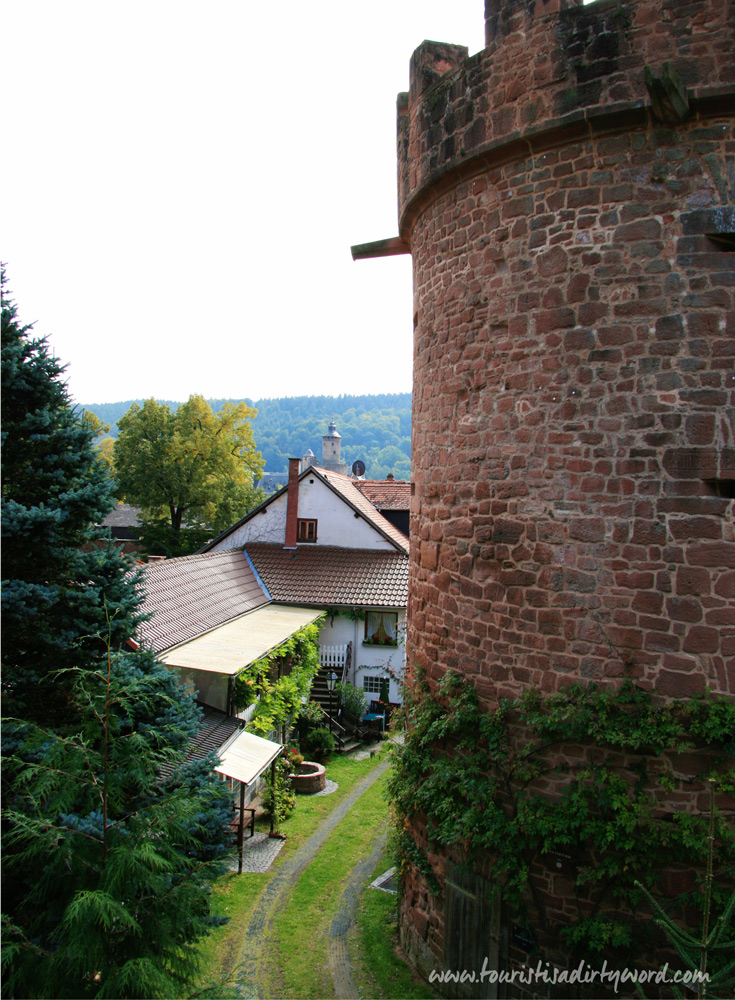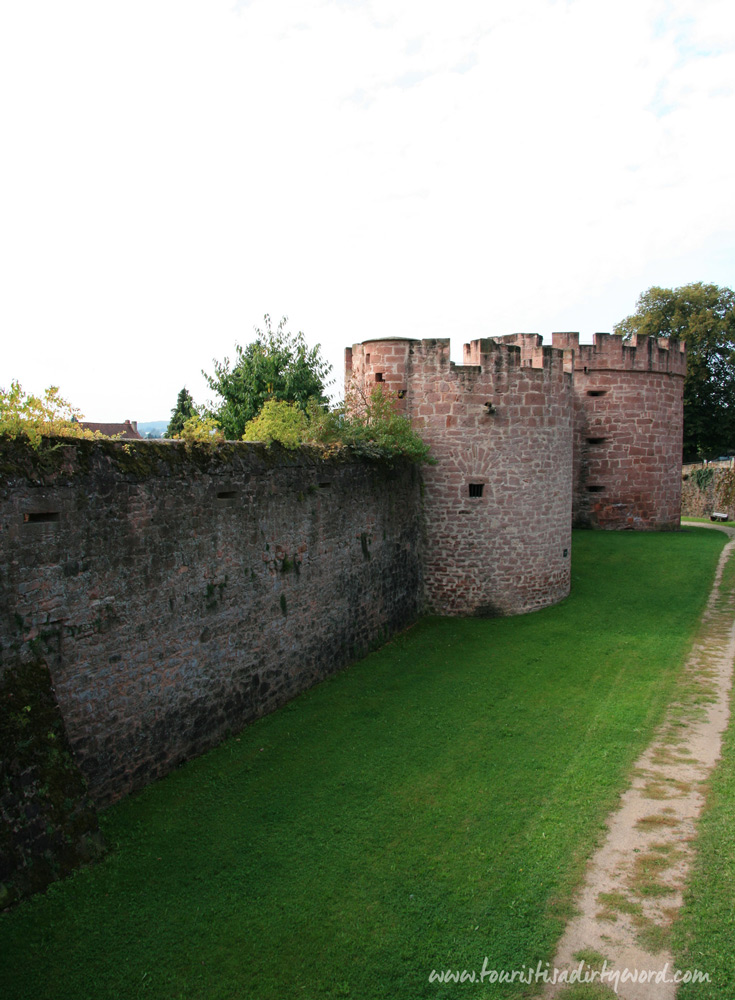Disclosure: Please note that some links are affiliate links, and at no additional cost to you, we earn a commission if you make a purchase.
If you would like to support this website in some way, using these links will help do exactly that.
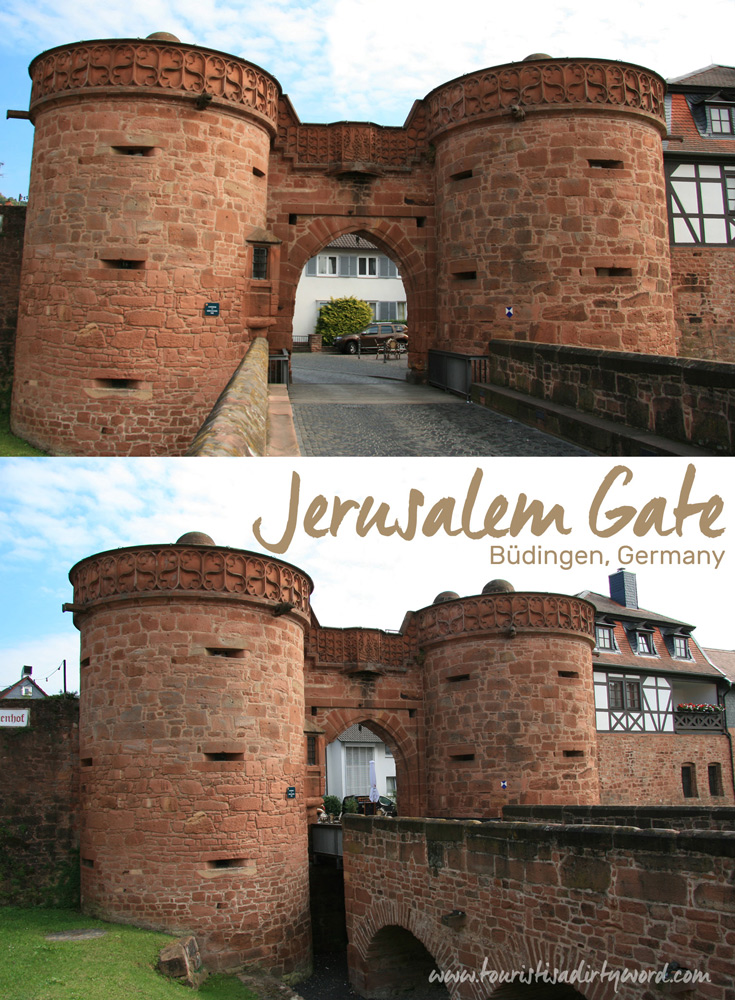
Our favorite landmark in Büdingen was the Jerusalem Gate at the edge of the old city. It was the west entrance gate to the old city, flanked by a tower on each side. The walls on each tower are 4 to 5 feet thick, depending on which wall part of the tower you measure. The whole construction is made out of red sandstone, found in the regions around Büdingen. Below the tracery on the top part of the towers are gargoyles in form of lion heads, and on the bridge in the middle is the combined coat of arms of Count Ludwig II of Ysenburg and his wife Maria of Nassau.
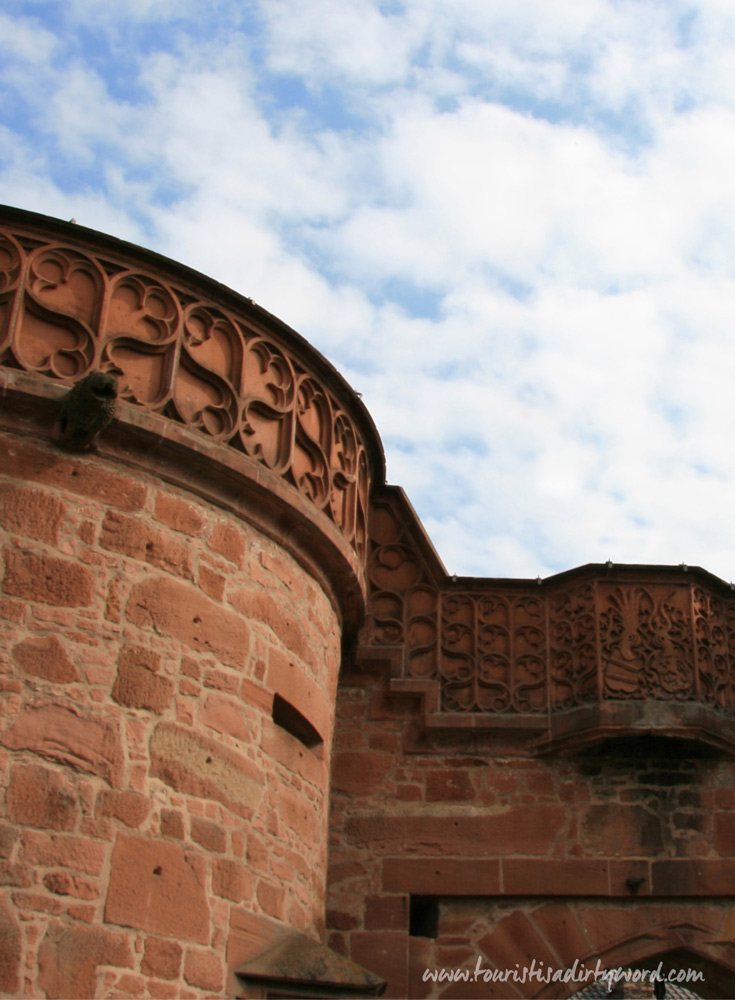
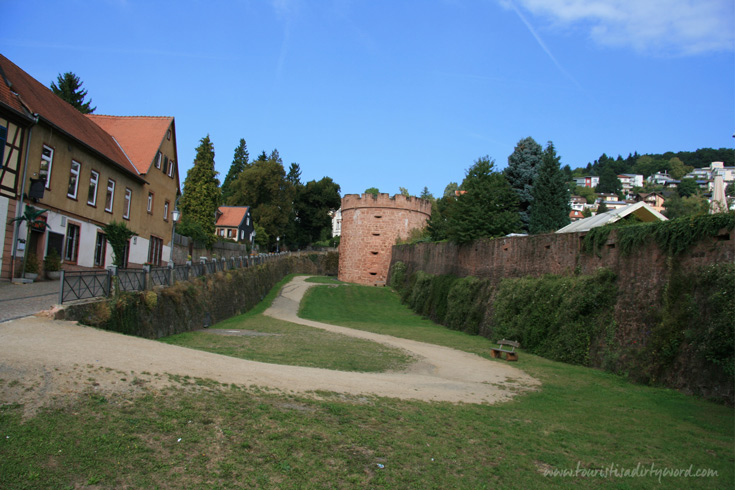
Before the Jerusalem Gate was built, Büdingen had a town wall with several defensive towers and two entrance gates. With a growing population, advancing usage of artillery weapons, combined with the discovery of gunpowder, Count Ludwig II of Ysenburg decided in 1476 to make the town walls thicker and to dig out a moat all around the town. The grand finale of the construction effort was the Jerusalem Gate, finished in 1503. Today the moat is empty, instead it has walking paths for exploring the town wall.
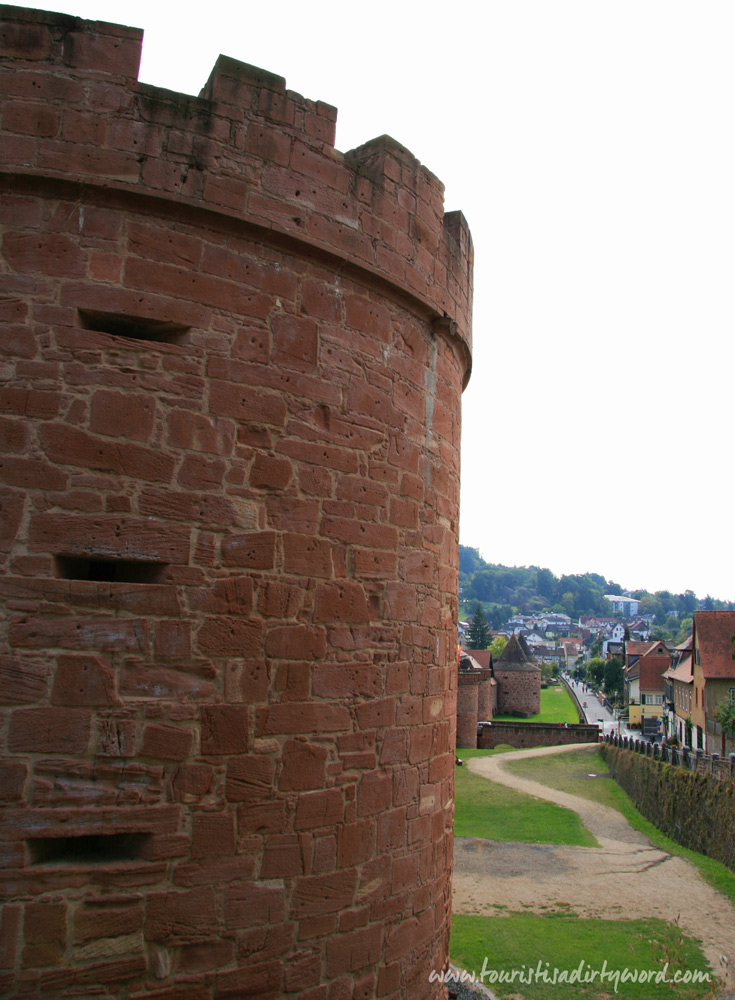
Theories on Why the Gate is Named 'Jerusalem Gate'
Historic documents show that the name of this gate derived from the Count's son, who completed a pilgrimage of Jerusalem, Israel, and is a copy of the Lions' Gate. However, if you look at both gates, there are almost no commonalities between them. While the historical documents prove that the son of the Count went on the pilgrimage to Jerusalem, a different theory may be closer to reality. Büdingen was an early adopter of the Protestant religion and many religious refugees sought shelter in the city. It is believed that when the refugees arrived at the city gate, they knelt down in front of it to pray and exclaimed, “This is our Jerusalem."
Inside the gate you will find the Sandrosen (desert rose) Museum, where you will find rose-like formations of the sandstone excavated in the regions surrounding Büdingen. Unfortunately, this museum was closed during our visit and still has very limited opening hours. If you are interested in seeing this museum, please check their current hours here.
Follow Along
If you enjoyed this article, or these topics sound interesting to you, you'll love our weekly newsletter. You'll receive a free Germany Packing list for signing up, and you'll receive each week's newest posts every Friday. Thank you for reading!

